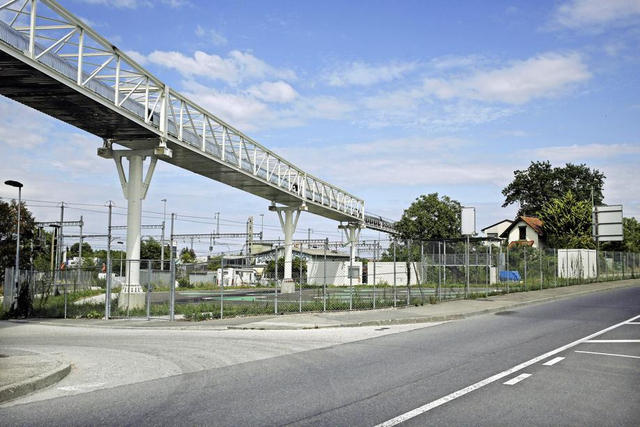Conveyor belt for transporting excavated materials from the new TPG depot to a recycling site.
Project details
The construction of the third TPG (Transports publics genevois - Geneva public transport) maintenance centre and depot started in October 2014. The “En Chardon” project is intended to resolutely respect the principles of sustainable development. TPG, together with Implenia Suisse SA and the Tram's group, developed and built an electric conveyor belt to evacuate rubble from the yard to the gravel pit at Epeisses where it will be sorted and recycled.
The structure extends over a distance of 1.6 km. It is mainly overhead but has a 90-meter long buried section in the form of a tunnel 3.4 meters in diameter, passing under the railway lines near the site. Since October 2015, it has been able to carry 300 tons of excavated material from the earthworks per hour. This alternative to conventional transport by road, using a 4 or 5 axle lorry, is a first for the canton of Geneva.
The new TPG depot at En Chardon will be right at the end of the airport runway along the Route de Meyrin. It will have two levels: a depot for 70 trams on the ground floor and one for 130 buses in the basement.
Qualitative benefits
- The equivalent of 34,000 return journeys by lorry are avoided due to transport by conveyor belt (320,000 m3 of material conveyed)
- 182 tonnes of CO2 are saved through transport by conveyor belt.
Stages of the initiative
- Decision by the contracting authority
- Technical feasibility (particularly the proximity of the Epeisses gravel pit)
Areas of activity
Construction of the conveyor belt began in June 22, 2015 and was commissioned in October 2015. The first work involved the foundation for bearing elements of the steel structure. The 90-meter long underground belt was then made, allowing the belt to go under the railway tracks.
The project encountered some difficulties in obtaining administrative permits and because of the requirement to obtain agreement from the owners of many plots of land that the belt passes through. These obstacles were overcome through the determination of the contracting authority.
Name of financier
http://www.tpg.ch/communique-du-17-aout-2015http://www.tdg.ch/geneve/actu-genevoise/Les-TPG-depensent-6-millions-pour-evacuer-des-gravats/story/21451347
http://www.tdg.ch/geneve/actu-genevoise/Un-toboggan-a-gravats-sillonne-Meyrin-et-Vernier/story/22980798




